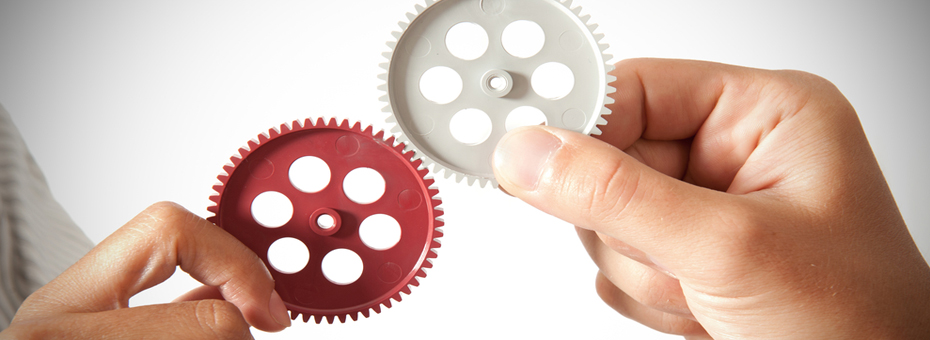“Why do you want to go there?” “Why waste time going to the plant floor when we are supposed to be assessing product development capability?” my host asked me, for the umpteenth time.
This wasn’t the first time a senior product development leader could not make the connection, and while it wasn’t exactly surprising, it definitely was not a good sign.
In fact, one of the best ways to learn about a company’s product development capability is simply to walk through their manufacturing operations. Take a walk, what do you see? Large re-work areas, lots of quality containment, workers who must be contortionists, trapped labor, poor fit and finish, and lots and lots of variability? Chances are pretty good that there are opportunities in product and process development.
Excellence in product development is not “an engineering thing”; it is an enterprise thing, and Manufacturing’s role in product and process development is crucial. This should not be new news. Yet it is still rare to find a company that truly excels at this. Why? For one thing, it’s really hard work, but more often companies struggle to create the balance required to produce both great products and lean value streams. Many companies even struggle to visualize what this would look like. This in fact is one of the fundamental differences between traditional product development and lean product and process development.
One way that can be helpful, if a bit contrived, is to think about Manufacturing’s role in product/process development as functioning at evolving levels of maturity leading to a fully participating development partner. Over the years I have come to think of this evolution in four fairly broad stages. Few companies evolve through all stages on their own; more have help to get through, but most seem to get stuck some place along the way.
Stage 1 (The Victim):
In this stage Manufacturing is in survival mode as new products seem to be inflicted on them. Evidence of this stage includes lots of complaining and very little improvement action. Re-work, heroics, re-design on the fly, and short tempers are everywhere. Launch disasters are not a matter of “if” but “when” in this stage. Product engineers don’t engage until “too late” and then seem to stay on launch forever – leading to a product development death spiral where engineers trapped on launch are not available to start new programs almost guaranteeing they will be stuck on launch again. Products often have significant quality issues both in the plant and in the field. Frustration, burnout, and a sense that “there must be a better way” helps to motivate Manufacturing to stage 2.
Stage 2 (Fighting Back):
In this stage, Manufacturing is “mad as Hell and they are not going to take it anymore!” They move people upstream to influence product design, but are largely ignored. When they’re asked for input, they are really only able to provide thumbnail assessment based on “experience”. These “feasibility assessments” change as the physical product begins to emerge which results in lots of late changes, rework and frustration. All of the activity in this stage doesn’t accomplish much of value, but often at least raises visibility of problems to senior management and perhaps averts a couple potential disasters. The end result is often an organizational imperative to “design for manufacturing.”
Stage 3 (“Design for Manufacturing”):
In this stage, Manufacturing actually has a seat at the table. The organization starts to create and use tools like DFM Standards, PFMEAs, and lots and lots of metrics and score cards. They establish advanced manufacturing teams who may even co-locate with product engineers. While they do make progress, sometimes significant progress, the focus tends to be on manufacturing feasibility rejection of any product attribute that challenges current manufacturing capability. They behave as if design for manufacturing is an end in itself. (The loser in this stage is the product and by extension, the customer). The company may have reduced launch and manufacturing issues, but they are still unable to create the sort of game-changing products that are crucial to their growth. Companies in this stage also often neglect the role of suppliers in product development excellence. This critical omission leads to new types of development and launch issues that are often incorrectly characterized as a natural “part of the development process.” Unfortunately many companies stop at this stage. However, a select few persevere to create a true partnership and a focus on creating profitable value streams.
Stage 4 (Development Partnership):
In this stage, a true partnership has been forged between Manufacturing and PD Engineering with aligned objectives that focus on delivering both great products and value stream excellence. Manufacturing has established a robust manufacturing development system that is fully integrated and drives process and product development. It provides the critical infrastructure, a common language, a process that enables JIT input, the right skill sets, clear roles and responsibilities, powerful tools, and drives collaboration. There is still stress and even conflict, but it is a creative tension born of professionals stretching the organization’s capability. The result is not only great, innovative products, but also manufacturing processes and capabilities that serve as a lasting and powerful competitive advantage. This stage, includes suppliers as valuable partners in their own right and captures both product and process knowledge as the foundation of continuous improvement. They have evolved a system based on collaboration to deliver maximum value to their customer. Beyond the benefits to product and process development, this level of collaboration and organizational focus creates a powerful competitive advantage and provides the foundation for an actual lean enterprise.
So, is it time for you to take a walk?






